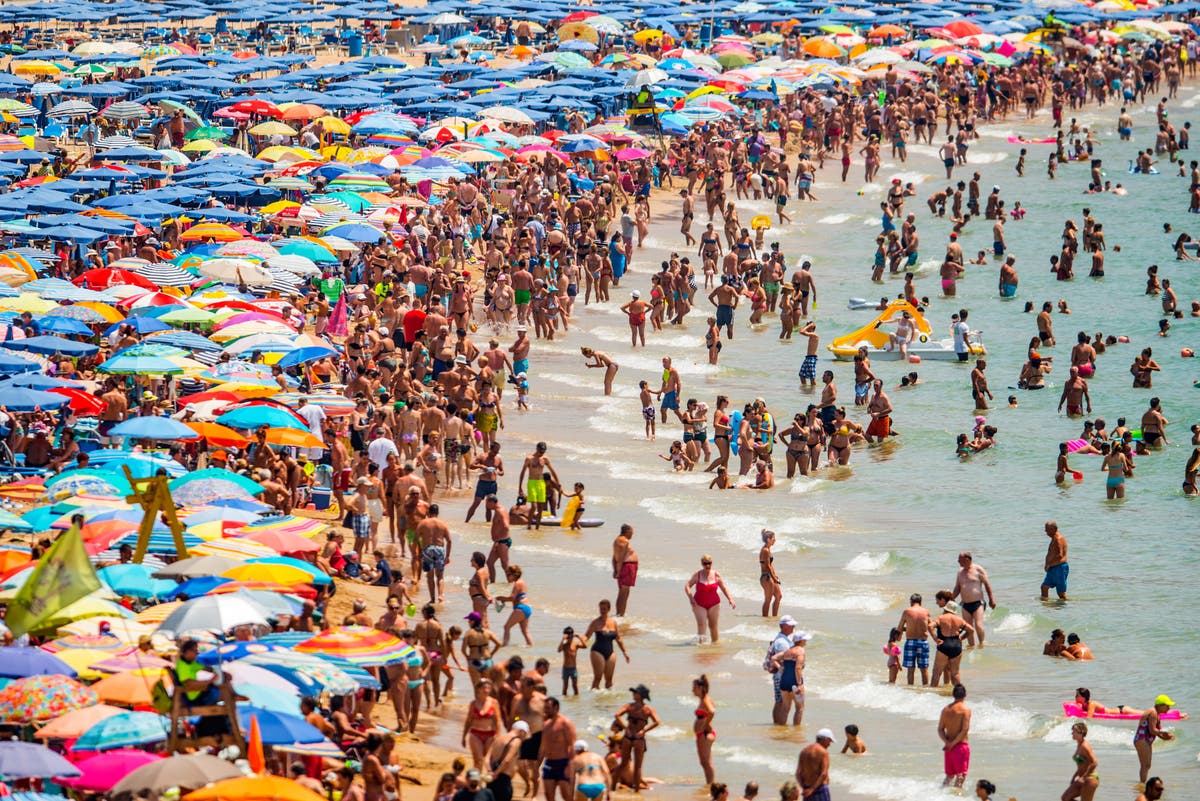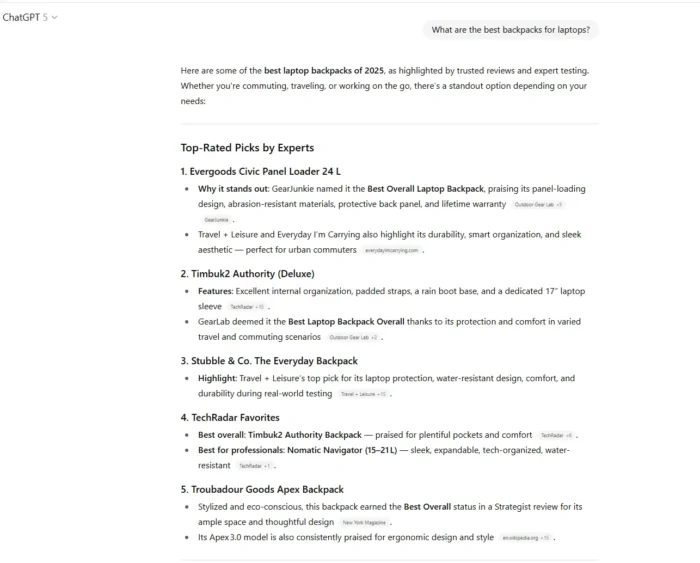Evil Week: How to Hide Porn on Your Windows PC
Welcome to Evil Week, our annual dive into all the slightly sketchy hacks we’d usually refrain from recommending. Want to weasel your way into free drinks, play elaborate mind games, or, er, launder some money? We’ve got all the...
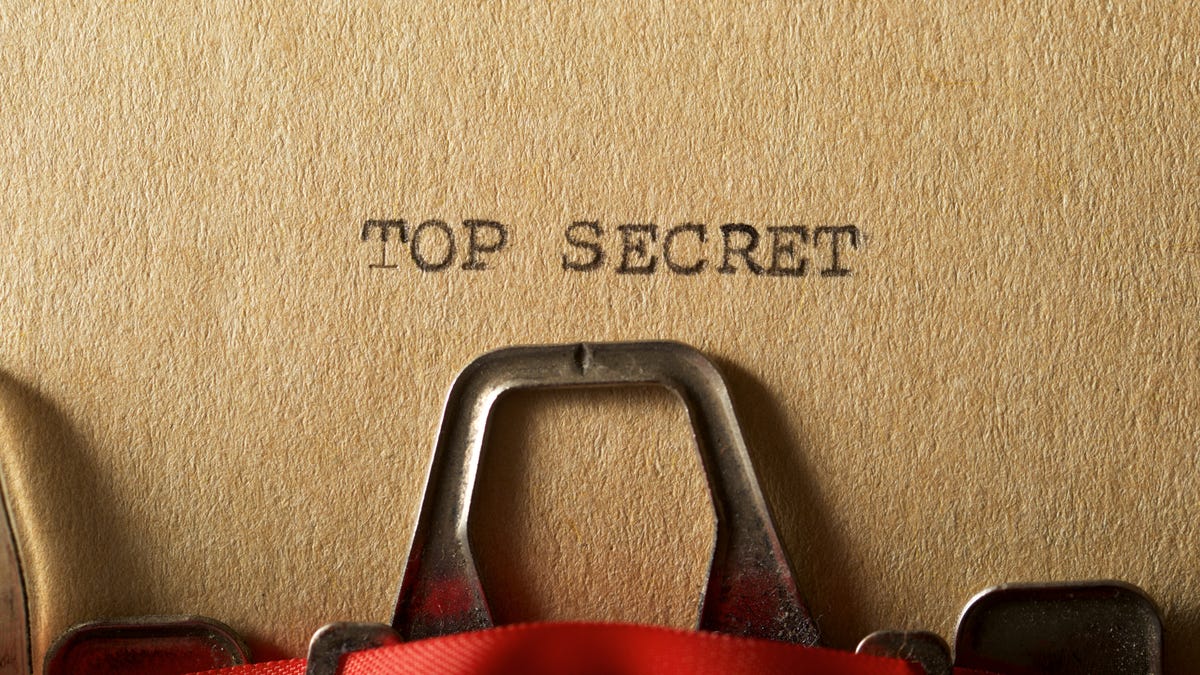
Welcome to Evil Week, our annual dive into all the slightly sketchy hacks we’d usually refrain from recommending. Want to weasel your way into free drinks, play elaborate mind games, or, er, launder some money? We’ve got all the info you need to be successfully unsavory.
This article is about how to hide porn on your computer. The delicate souls among you can replace the word “porn” with “important files” and the same basic methods still apply. For everyone else, real talk: It’s not very difficult to hide porn files on your Windows PC, with the caveat that you’ll never be able to keep them away from someone who is truly dedicated to finding out what’s stored on your machine.
If that’s your scenario, maybe keep all your secret stuff on a USB-connected drive and hide it somewhere nobody will find it. Or stick to watching streaming sites via your browser’s incognito mode and use the auto-delete history setting just to be sure you’re covering your tracks (or whatever the equivalent settings are in your browser of choice).
But if you’re set on downloading and saving your porn to your PC, then there are two general approaches for hiding data in Windows: keep people out of your PC in the first place, or hide the data so anyone using your PC can’t read it (or find it). We’ll cover both approaches in this guide. All methods discussed work on Windows 11 and Windows 10.
How to lock down your Windows PC so nobody gets in to view your files
In theory, having a very strong authentication system in place for logging into Windows could allow you to be a lot lazier with your file concealment. If nobody can get into your system, it stands to reason you could leave any “important” files sitting right there in a folder on your desktop, for all you care. This isn’t the most comprehensive way to hide files on your PC, obviously, but it splits the difference between convenience and concealment. And if you share a computer with someone else, you can cordon off your files and settings to a separate user account that they can’t access. Note that this requires you to have admin privileges to access and change your Windows user settings.
The first line of defense is having a strong password for your desktop or laptop PC—one that you don’t use anywhere else, and one that you’re willing to change on a semi-regular basis if you live in a shared space with other people. While it’s unlikely that another person in your home or apartment will ever guess or otherwise extract said password, using the same login for years only multiplies the possibility.
You can set a Windows login password in Settings > Accounts > Sign-in Options. You can also create new user profiles under Settings > Accounts > Other Users.

Screenshot: David Murphy
I would not use a convenient PIN code to log into your Windows PC. While it makes it a lot easier to type in a few numbers instead of 20 characters, that’s just asking for someone to figure out your login. Similarly, I wouldn’t use Windows 10's dynamic lock feature, which opens up your system whenever a Bluetooth-paired device is in range. No, no, no. Even a picture password makes me go a bit, “Hmmmmm,” like Henry Cavill’s Geralt of Rivia.
Go with a long, annoyingly complicated password. Or, better yet, set up Windows Hello-based authentication that uses your face or your fingerprint to log in. You can also try Window’s security key option, which requires you to plug in a USB device while you’re typing in your password or a PIN. That extra layer of protection can go a long way to keep people out of your files—just make sure you don’t lose your USB key or you could risk locking yourself out.
This should be all you need to keep people out of your PC, but I still wouldn’t recommend leaving your porn strewn all around your desktop. You won’t have to go to incredible lengths to hide it if you’ve really locked down your system, but you should still assume that someone, someday, will be able to see what’s on your desktop.
That reminds me. Make sure you’ve set Windows to require authentication when it wakes up from sleep (via Settings > Accounts > Sign-in options), and make sure you’ve enabled “On resume, display logon screen” within your screen saver settings:
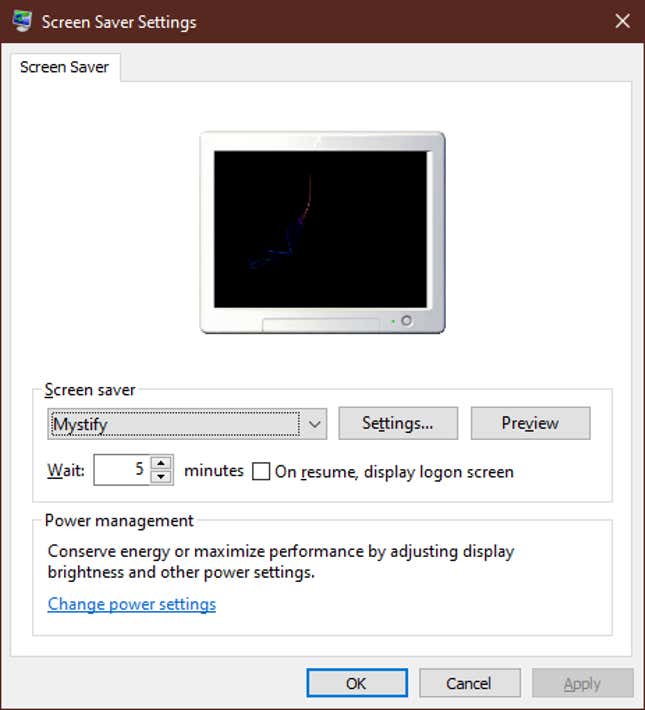
Screenshot: David Murphy
That way, someone will be prompted to log into your system if they mess with it while you’re away after you’ve already logged in. You don’t have to go to these lengths if you’re diligent about locking your system when you step away to do something else (Windows Key + L!), but all it takes is one forgetful moment to inadvertently expose your secret life.
How to hide files on your PC
If you don’t want to go with a super-strong login setup (or can’t, if you’re merely one of many accounts on a shared PC), you should at least take a moment to come up with a pretty good plan for hiding your files on your PC.
Before I begin, I’ll note that this technique isn’t foolproof. You’ll have to cover your tracks well, and all it takes is one audit of your storage space for someone to go, “Hmm, I wonder why this random folder is eating up a terabyte of space.” (That’s assuming that you have a lot to hide; stashing away a reasonable amount of files on your PC will be much easier.)
Step 1: Create a folder to hide files in
The first step is to create a place to hide your files. There are a few options, including a password-protected .ZIP file, an encrypted folder, or just a plain folder scurried away deep in your PC’s files.
Option 1: Password-protected ZIP file. This option is a middle-ground between the simplicity of a plain hidden folder, and the security of encryption. Use an app like 7-Zip to create a compressed archive of your files. You’ll supply an encryption password as part of the archive-creation process (and select the option to encrypt the names of your files, too). Then, you can either hang on to that .ZIP file as-is, or you can rename it something completely unassuming: Steam.bak, let’s say, if you’re a gamer. If anyone asks, it’s a backup of some of your games.
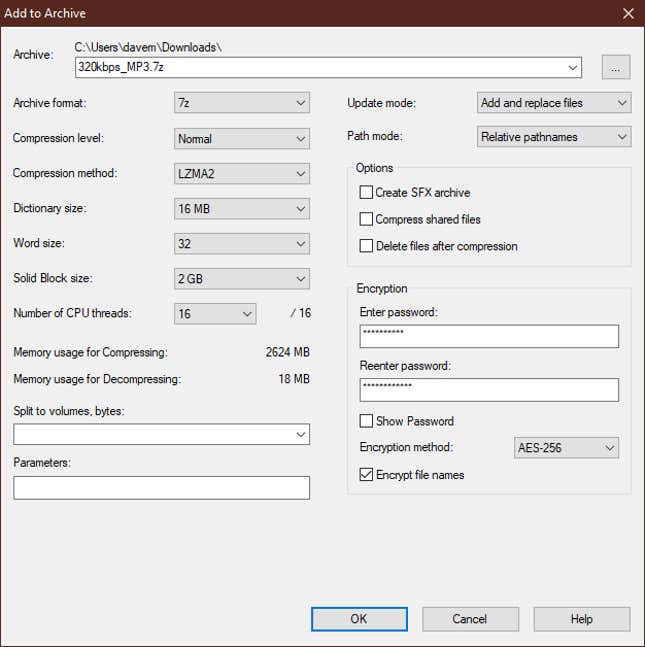
Screenshot: David Murphy
Option 2: Encrypted directory. You could also use an app like VeraCrypt or even Windows’ own BitLocker to create encrypted “containers” on your hard drive that will be impossible for someone to access (or potentially even find). This takes more time than the ZIP file option, but is theoretically more secure.
Option 3: Hidden folder. If you’re too lazy to unzip or decrypt your files each and every time you want to view them, you have another option. Find an obscure folder on your hard drive and make it even more obscure. Maybe add some official sounding nested folders to a random Windows folder, like C:\Windows\IdentityCRL\production\user\tmp , or bury a folder in your Program Files folders. You can even give them weird names.
Ultimately, you might create a folder structure that looks like this:
C:\Windows\IdentityCRL\production\system\login\shell\backup\~\.\.\
That’s a bit extreme, but it’s just an example. Dump whatever files you’re looking to hide on your system within that last folder, and either remember that you hid them all inside your Windows “IdentityCRL” folder, or just email yourself the address so you don’t lose it.
Step 2: Hide the folder
Regardless of which of the options you picked in Step 1, the next task is to hide the files using Windows File Explorer’s settings.
To make hide a file in Windows:
Right-click a file and select “Properties.” (Note that Windows 11 users will need to right-click then select Show More Options > Properties.)Check the “Hidden” box under Attributes.Click on “Advanced,” and uncheck “Allow files in this folder to have contents indexed in addition to file properties.”Click “Apply” to save the changes.You can now hide or reveal the hidden files with Windows File Explorer. The option is found under View > Show > Hidden on Windows 11, or View > Hidden Items on Windows 10.
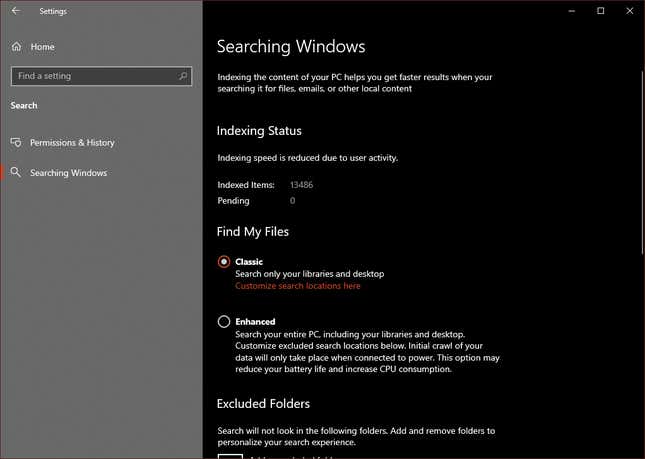
Screenshot: David Murphy
Step 3: Remove the hidden files from Windows Search
Next, you’ll want to modify Windows’ search settings to ensure no one can find the file even if you accidentally leave the Show Hidden Files option turned on.
In Windows 10:
Go to Settings > Search > Searching Windows.Make sure “Classic Search” is selected, not Enhanced.Next, click “Customize search locations here” to make sure your hidden folder isn’t being pulled into Windows’ indexing, lest your files potentially appear if someone types in any part of their name or extension via the Start Menu’s search function. You could also add a parent folder (like “c:\Windows\”) to the exclusion list if you don’t think that will cause someone to get too curious. Just note you won’t be able to search for any files within the excluded directories.In Windows 11:
Go to Settings > Privacy & Security > Searching Windows. Make sure “Classic Search” is selected, not Enhanced.Next, click “Add an excluded folder” and add the location of your hidden files.Step 4: Stop files from appearing in “recent items.”
Assuming you’ve hidden all your files, there’s one more step you can’t forget about if you hope to cover your tracks: your recent lists. Windows Explorer, the Start menu, as well as many of the apps you use, will highlight files you’ve recently opened in a variety of potentially damning ways. Luckily, we can stop that from happening.
First, let’s prevent recent items from showing up on the Start Menu.
Go to Settings > Personalization > Start.Disable the “Show recently opened items...” option in Settings > Personalization > Start.While optional, disabling “most used apps” and all folders will ensure that files you view don’t end up in any “jump lists” that pop up when you right-click icons in your taskbar.Next, we need to stop Windows File Explorer from showing what you’ve been up to.
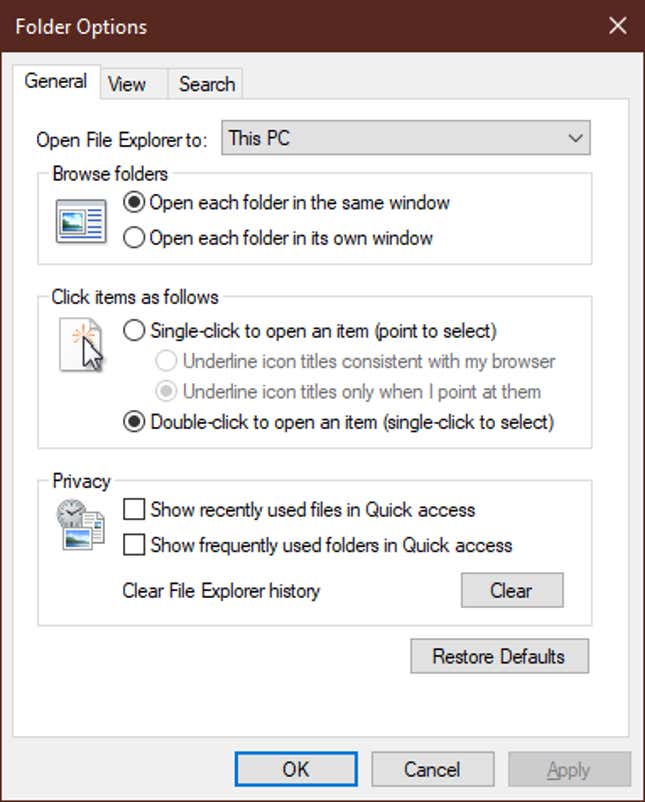
Screenshot: David Murphy
This is all a lot of work, and it only takes one slip-up for you to be found out, but these are the easiest ways to hide files on your PC. There are other options, of course. You could create a separate hard drive partition just for storing your porn, or only watch through a virtual machine, but those are extreme options—overkill, frankly. At that point, you may as well just hide them on an external USB device or cloud drive.
Otherwise, hiding stuff on a system that’s shared by multiple people is always a bit of a cat-and-mouse game. If you’re lucky, your roommates/family/loved ones are all Luddites, and not suspiciously-minded network admins.

 MikeTyes
MikeTyes 









